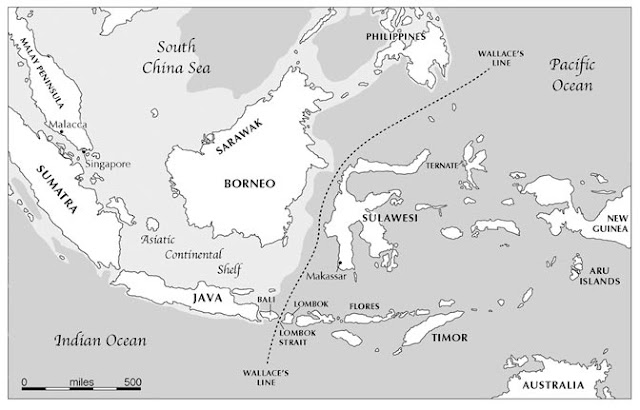The Galapagos Archipelago is located off the Western Coast of South America. It has no permanent buildings on it and is very well known for Charles Darwin formulating his
Theory of Evolution Through Natural Selection (coauthored by Albert Wallace) by observing life there.
 |
| Galapagos Archipelago Map |
Each island has unique flora and fauna. There is a species of iguana that has evolved to dive into the icy cold waters to eat the plants growing underwater. The trees present on the islands are not a true trees but are a species of dandelion that has evolved to reach enormous size due to the lack of competition. Tortoises have also reached astronomical sizes due to the lack of predators. Tortoises are the most common life in the Galapagos Archipelago. Each island has a unique species of tortoise that are specifically evolved to survive in those conditions. There is also a Galapagos Penguin. The Galapagos Penguin came from either Antarctica or Australia and has evolved to suit the conditions found on the islands. As it can travel through water it can and has populated all islands in the Galapagos Archipelago along with Galapagos Iguanas.
The formation of the archipelago is due to a hotspot (a spot in the mantle that is particularly hot and therefore able to push through the crust). Lava pushes through the crust and forms volcanoes. These volcanoes grow as they erupt and soon form islands. As the crust of the earth moves the islands move, but the hotspot does not, leaving a volcanic chain of islands. As the islands move off the hotspot, magma (lava once it has breached crust) stops feeding the volcanoes and they erode quickly.
-Darwin


